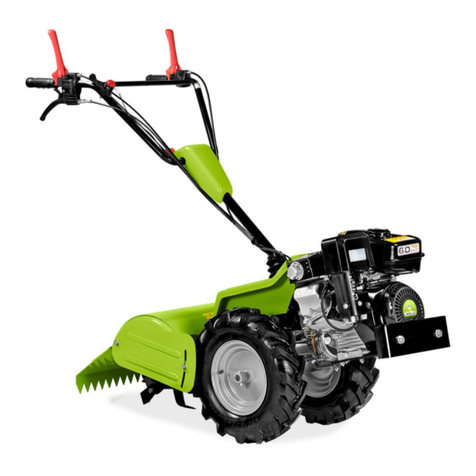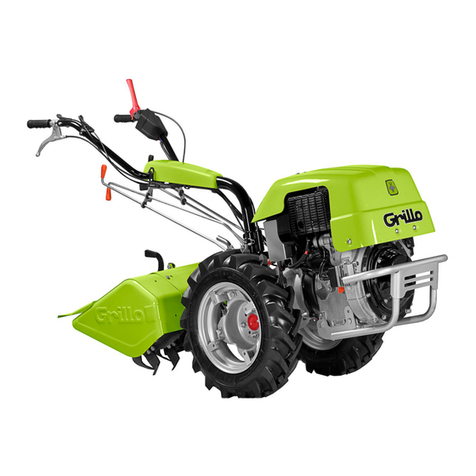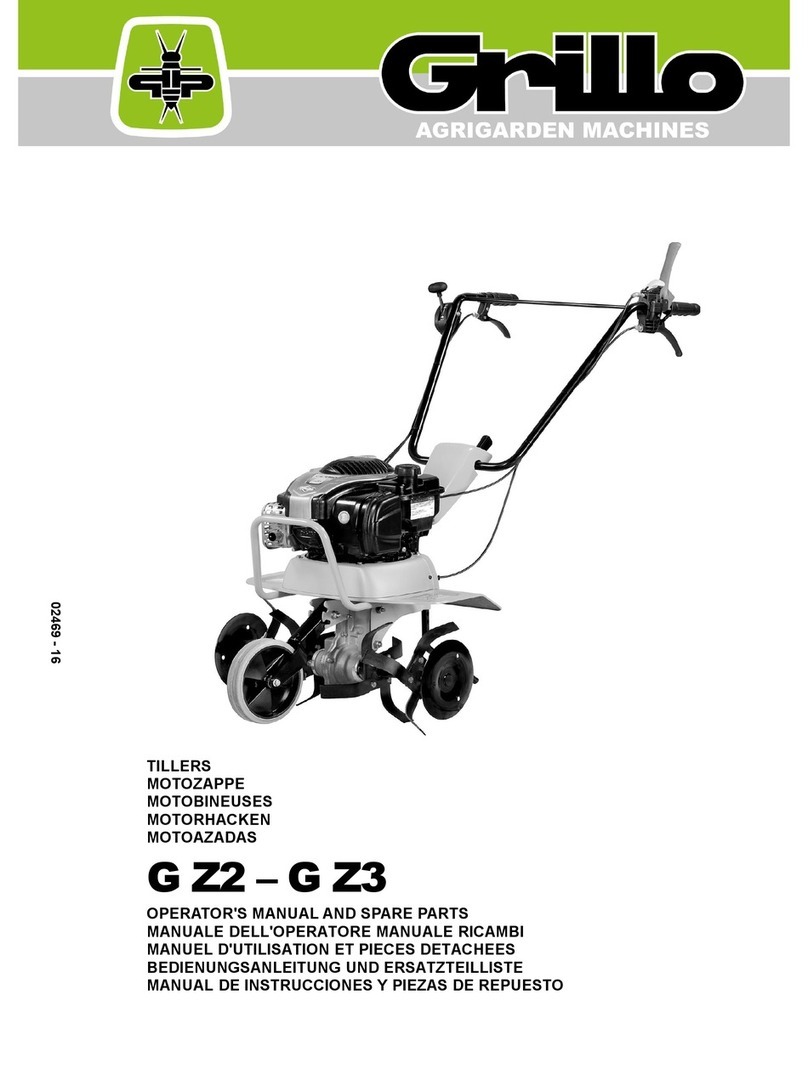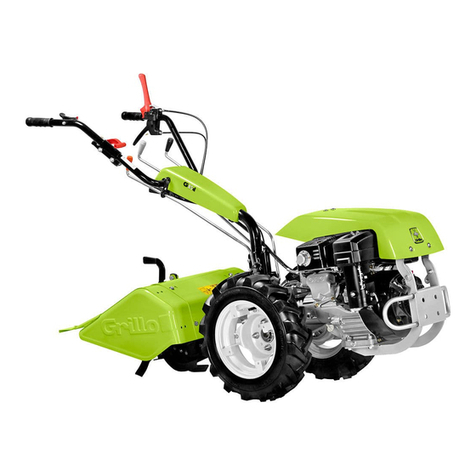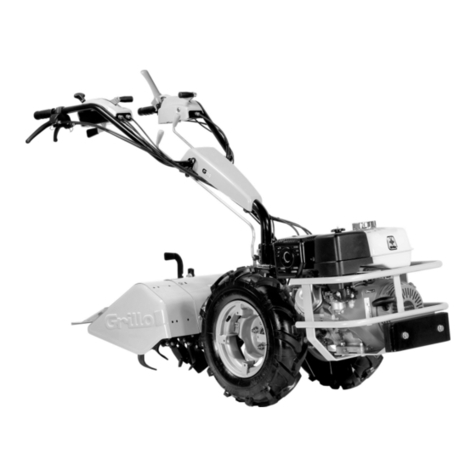6
G55 ROTOVATOR
Dear Customer,
Thank you for choosing our rotovator; we are sure that your new machine’s performance will meet your
requirements in full.
To ensure optimum service and maintenance of its qualities over time, read this manual carefully and follow its
instructions. This will give you the best results and protect your investment.
Please keep this manual, which must always accompany the machine.
CAUTION! Before starting the engine, read this carefully.
The following warnings are very important in ensuring safety!
SAFETY REGULATIONS
Caution is your main weapon in preventing accidents!
We urge you to read the following regulations for use of the machine carefully before starting work.
Improper use of the machine and its equipment may cause damage; to reduce this risk, read the following
precautions carefully.
1) Read the whole of this manual before starting the machine or putting it in motion.
2) Pay special attention to the safety warnings and labels.
3) Rotation of the tiller is extremely dangerous; never insert hands or feet under the tiller!
4) Before other people are allowed to use the machine they must first be informed about the safety regulations
and how to use the vehicle.
5) Before starting the engine, make sure that there is no-one nearby, particularly children.
6) Never use the machine when tired and do not drink alcohol.
7) Check the ground before tilling for stones, sticks or foreign bodies which might damage the machine or be flung
dangerously to some distance during operation.
8) Before starting work, put on suitable working clothes, gloves, heavy footwear and goggles.
9) Never use the rotovator on steep slopes; it might tip over.
10) Never allow the machine to be used by anyone under 16 years of age.
11) Never reverse with the engine at high throttle.
12) It is dangerous to operate the levers sharply with the engine at maximum rpm.
13) Never keep the engine running indoors; you may inhale poisonous gases.
14) Always switch off the engine before filling up with fuel, keep away from sparks or flames and do not smoke!
15) Avoid fuel spills and after filling the tank clean all spills before starting the engine.
16) Never tamper with or disactivate the safety devices.
17) Never make any adjustments or do any cleaning with the engine running.
18) Never have anyone check the machine while you are driving with the engine running.
19) The user is always responsible for injury or damage to third parties.
20) Any improper uses cause the guarantee to become null and void and the constructor will decline all liability.
21) Misshapen or damaged hoes must always be replaced and never repaired.
22) Always use original Grillo spare parts.
23) Before starting any work with the machine, check that all the accident prevention systems with which it is
equipped are in perfect working order. They must never be disabled or tampered with.
24) Before starting work, check that the nuts and bolts securing the tiller and hoes are perfectly tight.
25) All protective fittings (hoods, mudguards, etc.) must be kept in place during operation.
26) Never clean the tiller with the engine running.
27) Never use the machine barefoot.
IDENTIFICATION AND AFTER-SALES SERVICE
IDENTIFICATION
The vehicle’s serial number is punched on the nameplate on the
left-hand longitudinal member of the chassis and on the gearbox
nameplate.
Always state the serial number when ordering spare parts.
Grillo G55
80 kg.
6/3600
tipo
serie
massa c.a.
anno
KW/giri minuto
S.p.A.
CESENA - ITALY
Cod. 03293
1997
AFTER-SALES SERVICE
This handbook provides instructions for the use of the rotovator and for correct basic servicing which the user can
carry out himself.
For all procedures not described in this handbook, contact your local dealer.








